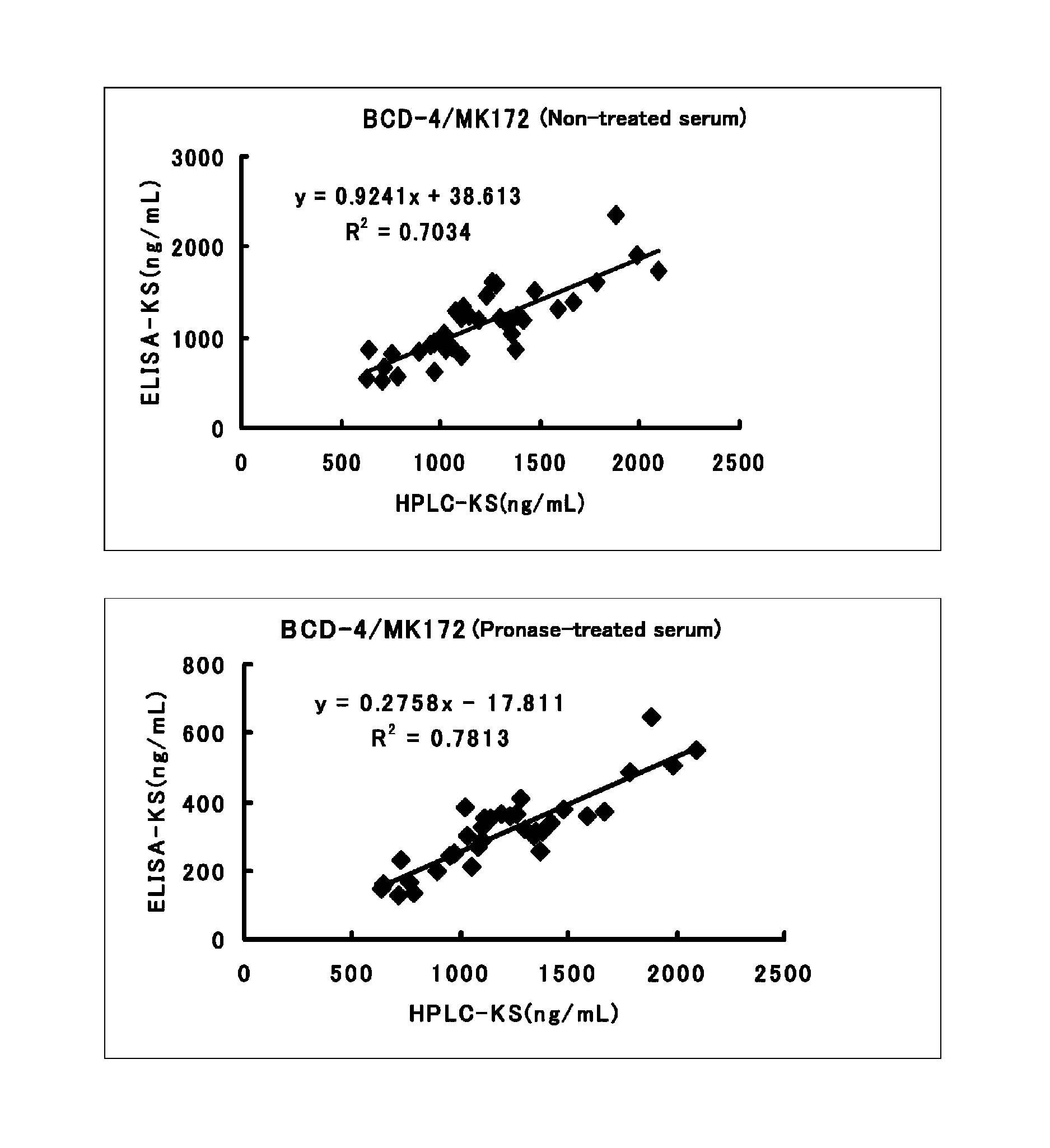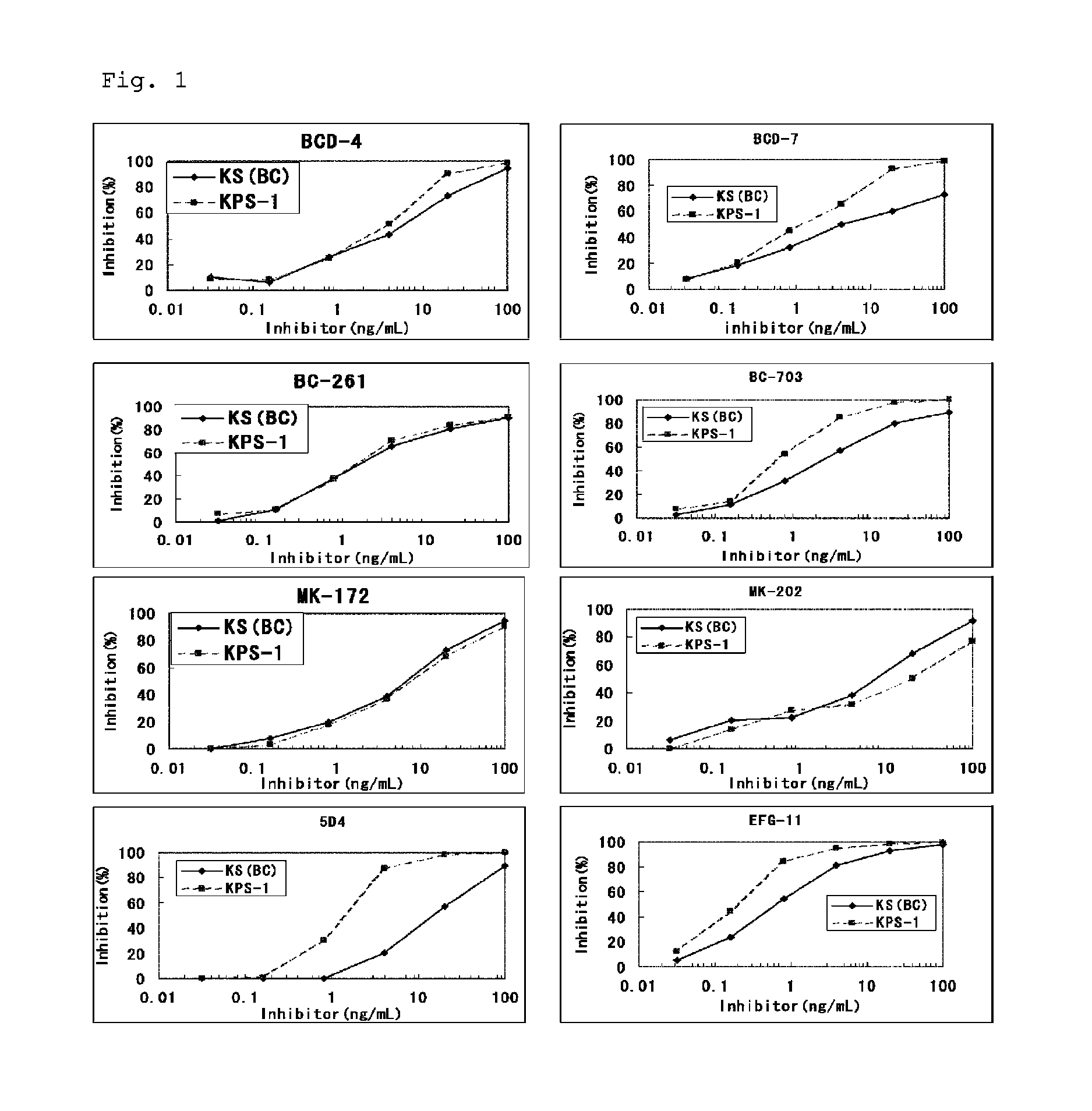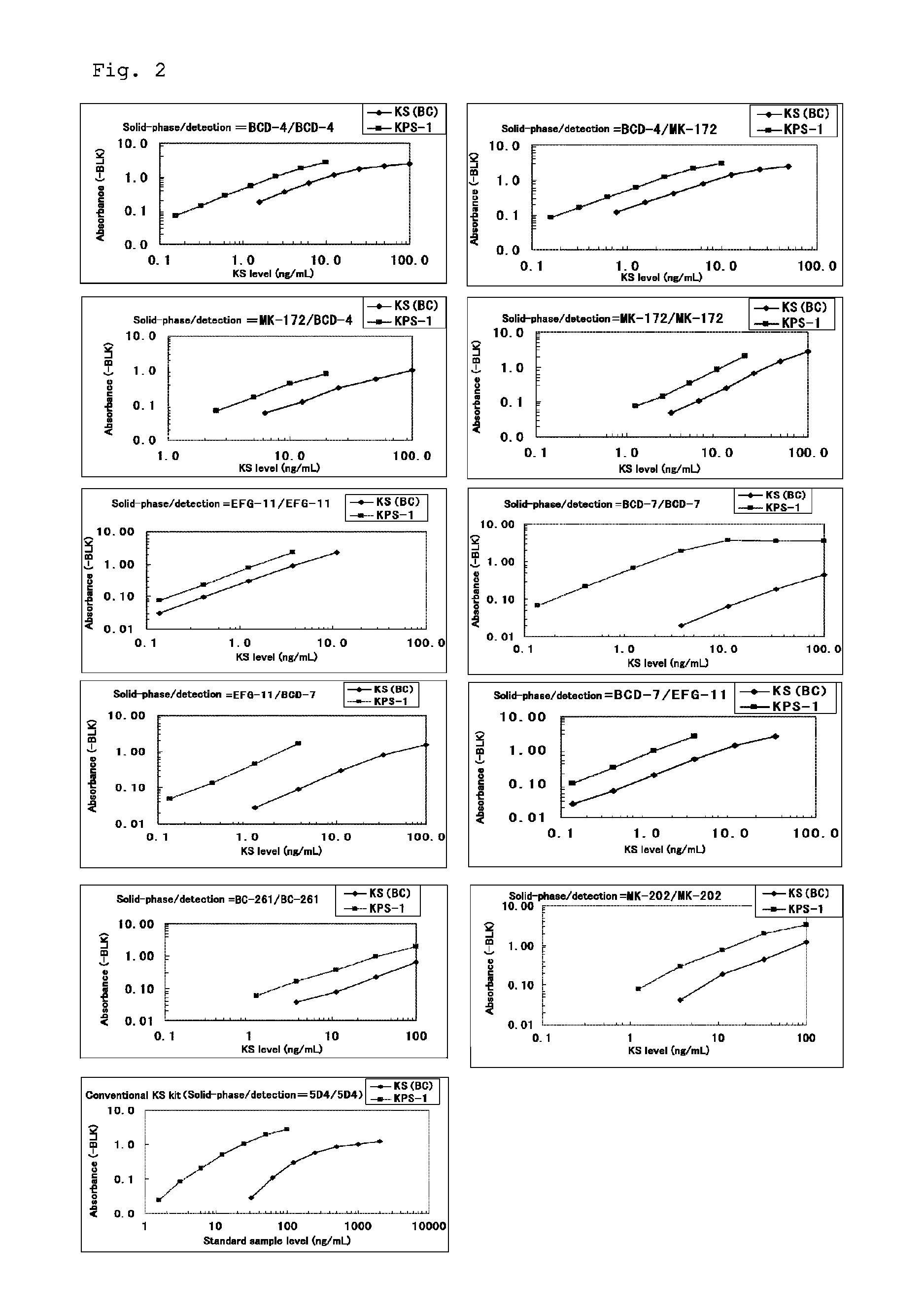Method for assaying keratan sulfate, assay kit therefor and method for detecting joint disease by using the same
a technology of keratan sulfate and assay kit, which is applied in the field of assaying keratan sulfate, assay kit therefor and method for detecting joint disease by using the same, can solve the disadvantages of cellulose acetate membrane electrophoresis, method disadvantageous for the treatment of a large number of samples, and virtually no reports on the assay of rat-derived and mouse-derived samples, and achieves high sensitivity, damage carti carti
- Summary
- Abstract
- Description
- Claims
- Application Information
AI Technical Summary
Benefits of technology
Problems solved by technology
Method used
Image
Examples
referential example 1
Preparation of Biotin-Labeled GAG (Hereinafter Referred to as “Bi-GAG”)
[0216]Each of GAGs (HS, HA, HEP, Ch, CS-A(S), CS-A(W), CS-B, CS-C, CS-D, CS-E, and KS) was dissolved in 0.1M MES buffer (pH: 5.5), to thereby prepare 10-mg / mL GAG solution. To each GAG solution (1 mL), 20 mM solution (25 μL) of biotin-LC-hydrazide (product of Pierce Biotechnology) dissolved in dimethylsulfoxide (product of Wako Pure Chemical Industries, Ltd.) was added. Subsequently, 100-mg / mL EDC (product of Pierce Biotechnology) solution (12.5 μL) prepared with 0.1M MES buffer (pH: 5.5) was added thereto. The mixture was sufficiently mixed, and then allowed to react under stirring at ambient temperature (15° C. to 25° C.) for 16 to 24 hours.
[0217]After completion of the reaction, the reaction products were dialyzed by use of a dialysis membrane (cutoff molecular weight: 10,000 or less) and phosphate buffered saline (pH: 7.2 to 7.5, containing no divalent ions such as calcium ion: hereinafter may be referred to ...
referential example 2
Production of Streptavidin-Immobilized Plate
[0220]Streptavidin (product of Vector Laboratories Inc.) was diluted with PBS(−) to a concentration of 20 μg / mL, and this streptavidin solution was added to a MaxiSorp (registered trademark) 96-well microplate (product of Nalge Nunc International K.K.) at 50 μL / well. The plate was stored at 4° C. for 14 to 18 hours to coat the plate uniformly. The plate was washed twice with PBS(−), and then phosphate buffer (PBS(−) containing no sodium chloride or no potassium chloride, pH: 7.2 to 7.5: hereinafter referred to as “PB”) containing Applie Duo (final dilution factor: 5 fold, registered trademark, product of Seikagaku Corporation) serving as a blocking agent for blocking a part of the well uncoated with streptavidin and 0.05% ProClin (registered trademark) 950 (product of SUPELCO) serving as an antiseptic was added thereto. The plate was allowed to stand at ambient temperature for two hours. Thereafter, the blocking solution was sufficiently r...
referential example 3
Production of Bi-GAG-Immobilized Plate
[0221]Bi-GAG prepared in Referential Example 1 was dissolved in TBS (50 mM Tris-HCl, pH: 7.3 to 7.8) containing Applie Duo (registered trademark) (final dilution factor: 20 fold, product of Seikagaku Corporation) serving as an additive, 0.05% Tween (registered trademark) 20 (0.05% polyoxyethylene (20) sorbitan monolaurate, ICI, a product corresponding to Tween 20, available from Wako Pure Chemical Industries, Ltd.), and 0.05% ProClin (registered trademark) 950 serving as an antiseptic (hereinafter referred to as “reaction mixture A”), to thereby yield a 1 μg / mL Bi-GAG solution. The streptavidin-immobilized plate prepared in Referential Example 2 was washed four times with 300 μL of 50 mM Tris-HCl (pH: 7.3 to 7.8) containing 0.05% Tween 20 and 0.05% Proclin (registered trademark) 950 serving as an antiseptic (T-TBS, hereinafter referred to as “washing liquid”). Then, the Bi-GAG solution was added at 100 μL / well, and the plate was allowed to stand...
PUM
| Property | Measurement | Unit |
|---|---|---|
| temperature | aaaaa | aaaaa |
| temperature | aaaaa | aaaaa |
| temperature | aaaaa | aaaaa |
Abstract
Description
Claims
Application Information
 Login to View More
Login to View More - R&D
- Intellectual Property
- Life Sciences
- Materials
- Tech Scout
- Unparalleled Data Quality
- Higher Quality Content
- 60% Fewer Hallucinations
Browse by: Latest US Patents, China's latest patents, Technical Efficacy Thesaurus, Application Domain, Technology Topic, Popular Technical Reports.
© 2025 PatSnap. All rights reserved.Legal|Privacy policy|Modern Slavery Act Transparency Statement|Sitemap|About US| Contact US: help@patsnap.com



